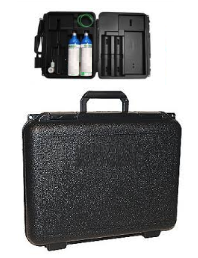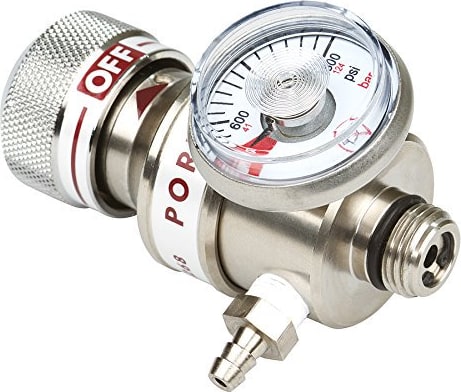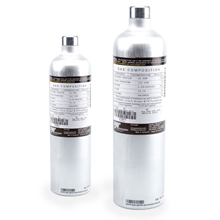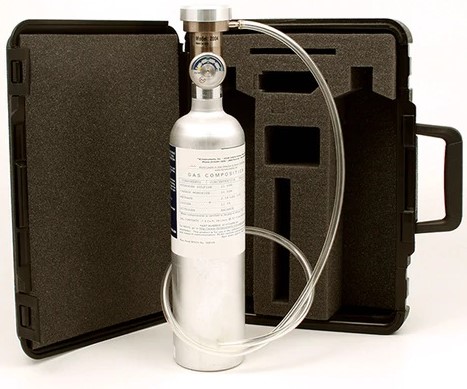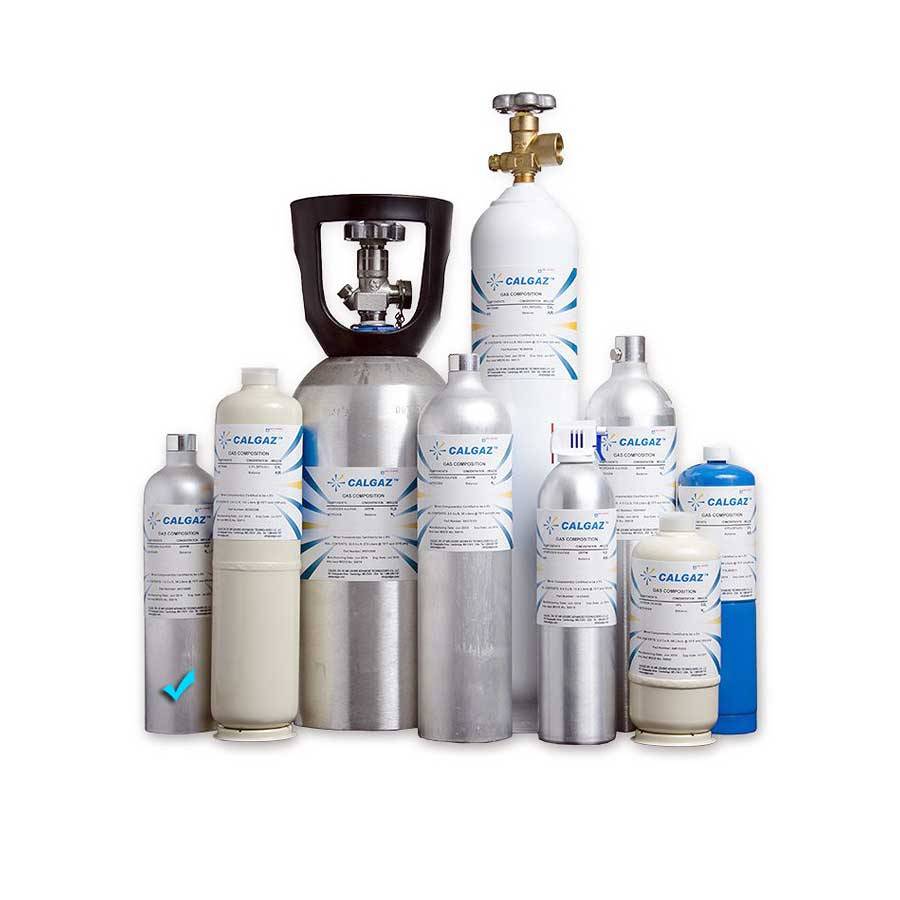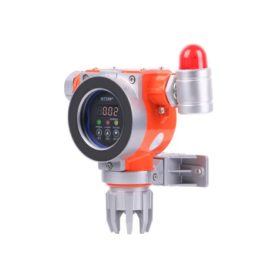Description
Our Precision Gas Calibration Kit is used for the Calibration and Maintenance of Gas Detectors and Sensors.
Introduction
In various industries, accurate gas detection is critical for maintaining a safe and healthy working environment. A gas calibration kit plays a crucial role in ensuring the accuracy and reliability of gas detection devices. This is done by calibrating them to known gas standards. This article provides an in-depth understanding of gas calibration kits, explaining their components, usage, and benefits.
Definition of a Gas Calibration Kit
A gas calibration kit is a collection of components and tools used to calibrate gas detection instruments. It typically includes a calibration gas cylinder, and a regulator. Furthermore, a flow control device, tubing, and adapter fittings. These kits are essential for verifying the accuracy of gas detection devices and ensuring precise measurements.
The Importance of Calibration in Gas Detection Regular calibration of gas detection instruments is vital for reliable and accurate gas measurements. Over time, factors such as environmental conditions and sensor degradation can result in inaccuracies. Finally, calibration compensates for these factors. This ensures that gas detection devices provide accurate readings and remain within specified tolerances.
Components of a Gas Calibration Kit
Calibration Gas Cylinder
The calibration gas cylinder contains a precisely known concentration of a target gas that is used to calibrate gas detectors. It is usually made of steel or aluminum and comes in various sizes and gas types, depending on the requirements of the specific gas detection instrument.
Regulator
The regulator is responsible for reducing the pressure of the gas coming from the calibration cylinder to a suitable level for calibration. Moreover, it ensures a stable and consistent gas flow throughout the calibration process.
Flow Control Device
The flow control device allows the user to adjust the rate at which the calibration gas flows into the gas detector during calibration. Finally, it ensures that the gas flow rate matches the specified calibration requirements of the gas detection instrument being calibrated.
Tubing and Adapter Fittings
Tubing and adapter fittings connect the calibration gas cylinder and a regulator. In addition, flow control device, and gas detector. In addition, they form a closed system, allowing the calibration gas to flow from the cylinder to the gas detector, ensuring accurate calibration.
Usage of Gas Calibration Kits
Gas Detector Calibration Process: The gas calibration process typically involves the following steps:
Preparation: Ensure the gas detector is in a stable environment and powered on.
Connect the components: Connect the calibration gas cylinder, regulator, flow control device, and gas detector using the provided tubing and adapter fittings.
Set the flow rate: Adjust the flow control device to achieve the specified flow rate required for calibration.
Initiate calibration: Use the gas calibration kit to introduce the calibration gas to the gas detector, following the manufacturer’s instructions.
Allow stabilization: Allow the gas detector to stabilize and read the calibration gas concentration until a stable and accurate reading is achieved.
Record calibration data: Record calibration parameters and results for documentation and future reference.
Repeat if necessary: Repeat the calibration process if the initial calibration does not meet the desired accuracy specifications.
Frequency of Calibration: The frequency of gas detector calibration depends on several factors, including manufacturer recommendations. In addition, industry regulations, and usage conditions. Gas detectors used in critical safety applications often require frequent calibration, while less critical applications may have longer intervals between calibrations.
Conclusion
A gas calibration kit is a reliable and essential tool for maintaining the accuracy and reliability of gas detectors. By calibrating gas detectors using known gas standards, these kits ensure accurate gas detection readings and compliance with safety regulations. Gas calibration kits provide numerous benefits, including accurate and reliable measurements, compliance with regulations, prevention of accidents, and extended sensor lifespan. Investing in gas calibration kits is crucial for industries that prioritize safety and require accurate gas detection in their operations.
Types of Gas Calibration Kits
Single Gas Calibration Kit: These kits are designed for calibrating gas detectors that specifically detect one type of gas. They contain a calibration gas cylinder with the target gas and a regulator. Also, a flow control device, tubing, and adapter fittings specific to the gas detection instrument being calibrated. Finally, single-gas calibration kits are commonly used for instruments that primarily monitor a single gas, such as carbon monoxide (CO) or hydrogen sulfide (H2S).
Multi-Gas Calibration Kit: Multi-gas calibration kits are designed for gas detectors that detect multiple gases simultaneously. Also, these kits include calibration gas cylinders with a combination of different gases. Gases such as hydrogen sulfide (H2S), carbon monoxide (CO), oxygen (O2), and combustible gases. Additionally, they contain the necessary components for calibrating the specific multi-gas detector. This will include regulators, flow control devices, tubing, and adapter fittings.
Portable Calibration Kits: Portable calibration kits are compact and portable solutions, ideal for on-the-go calibration requirements or field use. These kits often include a compact calibration gas cylinder, a mini-regulator, tubing, and adapter fittings. Finally, they are convenient for technicians who need to calibrate gas detectors in various locations or for industries where portability is crucial, such as oil and gas exploration or emergency response teams.
Fixed Calibration Kits: Fixed calibration kits are designed for permanent installation in calibration laboratories or fixed calibration stations. Moreover, these kits typically include larger calibration gas cylinders, precision regulators, flow control devices, and other accessories suitable for more extensive calibration needs. In addition, fixed calibration kits are often used in laboratories, manufacturing facilities, or industries where gas detection instruments require frequent or high-volume calibration.
Considerations for Gas Calibration Kits
Gas Compatibility: When choosing a gas calibration kit, it is essential to ensure that the calibration gas provided in the kit is compatible. It must be compatible with the gas detection instrument being calibrated. Moreover, different gas detectors require different calibration gases, and using an incompatible gas can result in inaccurate calibrations or damage to the detector.
Calibration Gas Standards: It is crucial to select gas calibration kits that adhere to recognized calibration gas standards, such as those established by regulatory bodies and organizations like the National Institute of Standards and Technology (NIST). In addition, calibration gas cylinders should come with valid calibration certificates indicating traceability to recognized standards.
Kit Versatility: Consider the versatility of the gas calibration kit, especially if you have multiple types of gas detectors in your facility. Also, some kits may offer the flexibility to interchange calibration gas cylinders. Also, regulators, or adapter fittings to accommodate different gas detection instruments.
Training and Support: Before using a gas calibration kit, it is beneficial to receive proper training on its usage and calibration procedures. Some manufacturers or suppliers may provide support and training resources. They can also provide calibration services to ensure accurate and effective use of the kit.
Conclusion
A gas calibration kit is an essential tool for maintaining the accuracy and reliability of gas detectors in various industries. The type of gas calibration kit chosen depends on the specific gas detection instrument and calibration needs. Whether it is a single-gas or multi-gas calibration kit, or a portable or fixed installation kit, these tools ensure accurate gas detection, compliance with regulations, and prevention of costly errors or accidents. By investing in gas calibration kits and following regular calibration procedures, businesses can maintain a safe working environment, optimize the lifespan of gas detection instruments, and ensure accurate measurements for critical decision-making processes.

